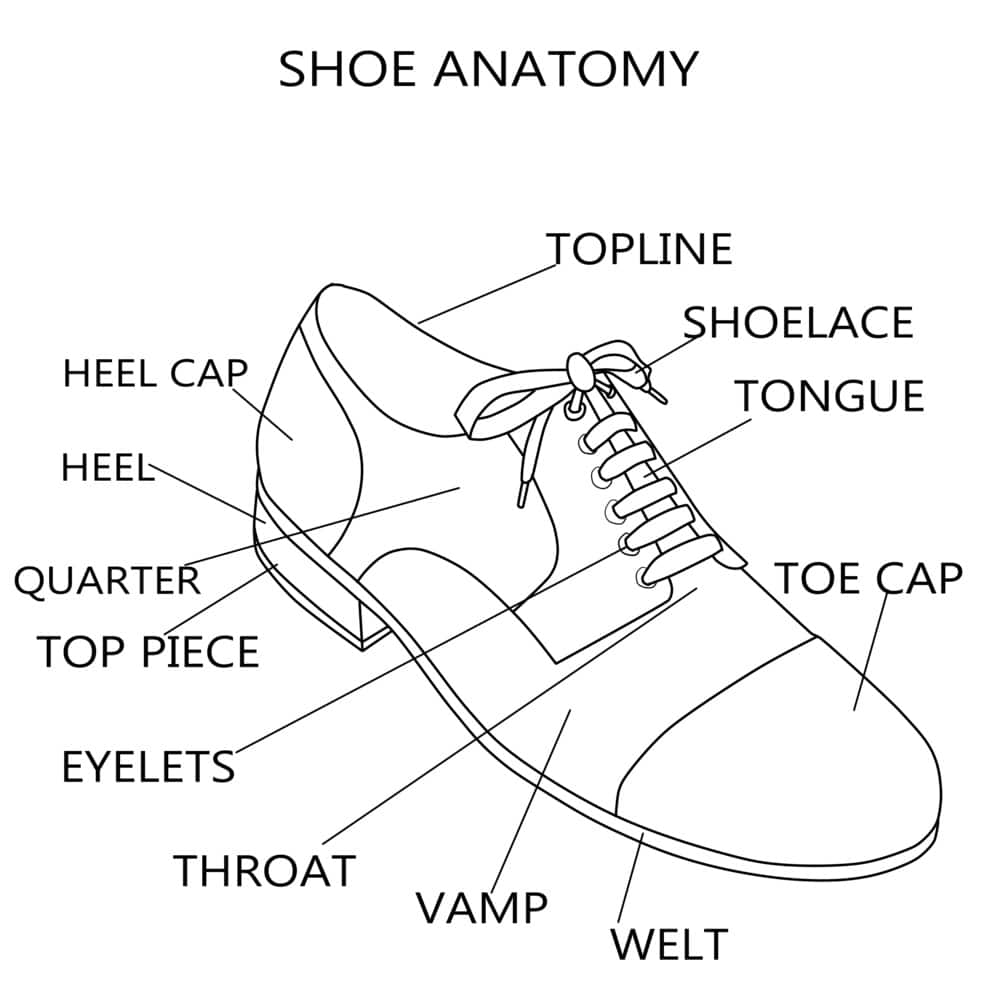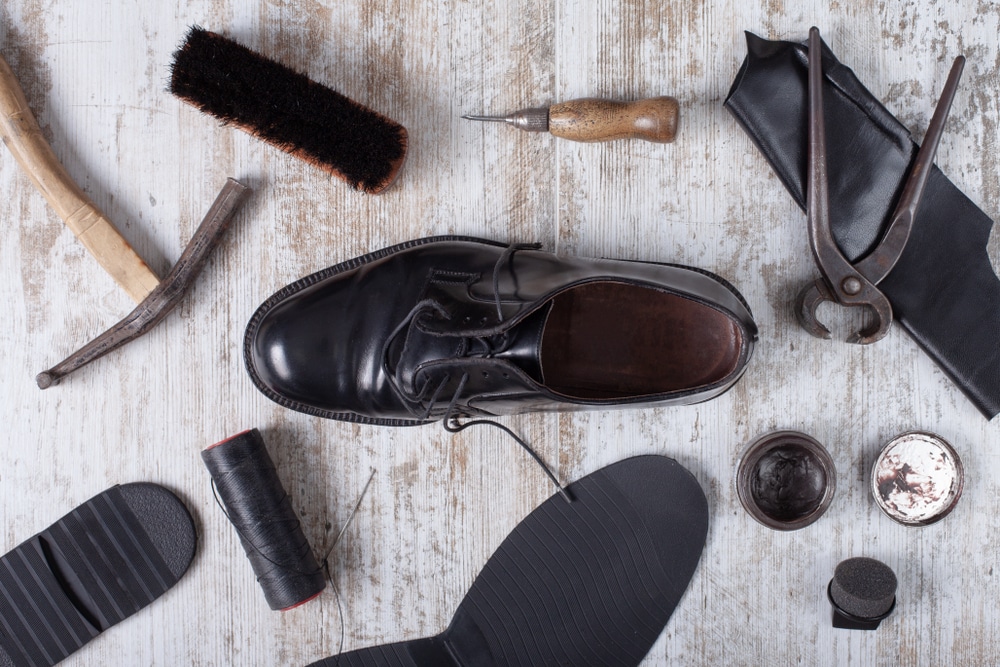Table of Contents
Have you ever wondered what makes your favorite sneakers so comfortable or how your elegant leather shoes hold their shape? The secret lies in the intricate design of the parts of a shoe. From the sturdy toe cap to the supportive arch of the foot, every element is meticulously crafted to ensure functionality, durability, and style. Whether you’re buying running shoes for performance or casual footwear for everyday wear, knowing the names of shoe parts can help you make the right choice. So, let’s step into the world of sneaker anatomy and break down the components that keep you moving in comfort and style!

The Upper
The upper part of the shoe is the section that covers the foot and provides structure and style. It plays a significant role in determining the shoe’s comfort, support, and aesthetic appeal. It is often made from a piece of leather, synthetic material, or a breathable piece of fabric in athletic shoes. Therefore this section influences both durability and appearance. The upper can be made from various materials such as leather, mesh, or synthetic fabrics. Key sections of the upper include:
- Toe Box: The front part of the shoe that houses your toes. A roomy toe box is crucial for comfort, especially in athletic or work shoes. A well-structured toe box ensures adequate room and contributes to comfort and support, especially during long hours of wear.
- Vamp: The area of the upper that covers the top of the foot. It often contains lace eyelets for adjustable fit.
- Quarter: The back portion of the upper that wraps around the sides and heel of the foot.
The Sole
The sole is the bottom part of the shoe and serves as the foundation. It provides cushioning, support, and traction. The sole is typically divided into three layers:
- Outsole: The outermost layer that makes contact with the ground. It is usually made of rubber or other durable materials to ensure grip and longevity.
- Midsole: Positioned between the insole and outsole, this layer offers cushioning and shock absorption. Common materials include EVA foam and polyurethane.
- Insole: The insole is the inner layer that provides cushioning and comfort and support for the arch of the foot, while the outer sole is the external layer that comes in contact with the ground.
Heel
The heel is located at the back of the sole and provides elevation and stability. The heel area is crucial for stability and balance. It includes the heel counter, a stiff structure that reinforces the back of the shoe. Thus the part of the heel that directly touches the ground often features durable rubber to prevent wear and tear.
Different types of heels serve various purposes:
- Flat Heel: Found in casual and athletic shoes, offering maximum comfort and balance.
- Stacked Heel: Composed of layers of material, common in dress shoes.
- Stiletto Heel: A high, narrow heel designed for fashion-forward footwear.
Toe Cap
The toe cap reinforces the front of the shoe and protects your toes. It’s especially important in work boots or safety shoes, where steel or composite materials are often used for added durability.
Lining
The lining is the interior material of the shoe that comes in contact with your foot. It enhances comfort, regulates temperature, and prevents chafing. Therefore, high-quality linings are often made from leather or moisture-wicking fabrics.
Tongue
The tongue is a flap located under the laces. It protects the top of your foot from the pressure of the laces and helps keep debris out of the shoe. Moreover, in slip-on styles, the tongue can be absent or integrated into the design.
Collar and Heel Counter
- Collar: The padded rim around the shoe’s opening that cushions your ankle.
- Heel Counter: A stiff insert at the back of the shoe that provides structure and keeps your heel in place. It’s essential for stability and preventing overpronation.
Shank
The shank is a supportive piece embedded in the sole, typically made from metal, plastic, or fiberglass. It’s located between the heel and the ball of the foot and helps maintain the shoe’s shape and support.
Laces and Eyelets
The laces and eyelets work together to secure the shoe on your foot. Eyelets can be simple punched holes or reinforced with metal or plastic for added durability. Therefore some modern designs feature alternative closure systems like zippers or elastic bands.
Welting
The welt is a strip of material (often leather) stitched along the edge where the upper meets the sole. It’s a hallmark of high-quality craftsmanship and allows for resoling, extending the shoe’s lifespan.
Outsole Tread
The tread pattern on the outsole determines the shoe’s grip and traction. Hiking boots, for instance, feature deep lugs for rugged terrain, while dress shoes often have a smoother tread.
Decorative Elements
Many shoes include decorative components like stitching, overlays, and logos. Therefore, these elements add to the shoe’s aesthetic appeal without compromising its functionality. From sleek heels to trendy boots, here are five stylish options to wear with red dress that will not only complement your red dress but also add a little extra flair to your look.
Conclusion
Every part of a shoe contributes to its overall performance, durability, and style. Moreover, the parts of a shoe come together to provide form, function, and style. By understanding elements like the upper part, heel area, and middle part, you can better evaluate shoes for your specific needs. Next time you shop, take note of the names of shoe parts and ensure they align with your desired comfort and support.Therefore, the next time you shop for footwear, take a closer look at the details—you might discover features that enhance your experience and ensure a perfect fit.


